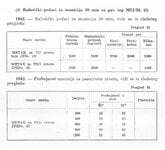Shortround6
Lieutenant General
What the Germans do not need is a small batch of guns using oddball ammo that need either totally new carriages (keep barrel and Breechblock) or large tractors to move.

Leave them in France and use them as AA guns.
Leave them in France and use them as AA guns.


